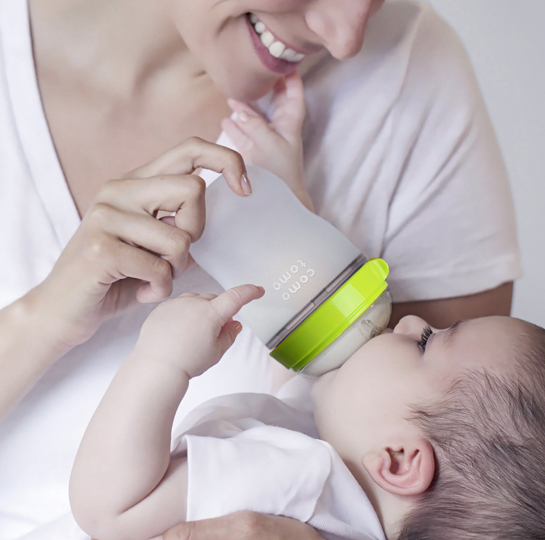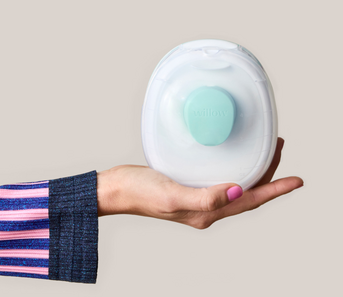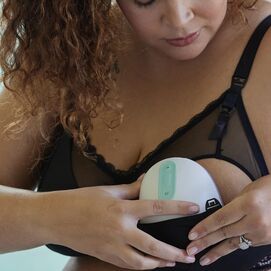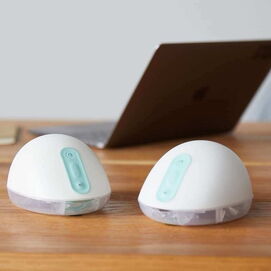Weaning from breastfeeding to formula feeding is a personal decision that should be based on what's best for both you and your baby. If you’ve been breastfeeding your baby and you’re looking to transition strictly to formula, you’re certainly not alone. For one reason or another, many moms ultimately make this decision.
We are here to explore some factors to consider and steps to take when transitioning to formula feeding. Remember, you're the best judge of what works for you and your family!
Is It Okay to Switch from Breastfeeding to Formula Feeding?
It's absolutely fine to switch from breastfeeding to formula feeding if that is the choice you make for yourself and your baby. Every situation is unique, and there are different reasons why a family might choose to transition from breastfeeding to formula feeding.
Although the American Academy of Pediatrics (AAP) recommends breast milk exclusively for the first six months, there can be circumstances where a switch to formula feeding becomes necessary or preferred. And there's nothing wrong with that!
Our Favorite Bottles
Our Favorite Bottles
You want only the best bottle for your pumped milk. For breastfed babies, we love Comotomo bottles.
Common Reasons for Switching from Breastfeeding to Formula
There are so many different reasons to transition from breastfeeding to formula feeding. Here are the top four reasons we have found:
Returning to work: Balancing the demands of a career while providing for your baby's nutritional needs can be challenging. Formula feeding can provide a convenient solution for moms who need to be away from their babies for extended periods.
Low milk supply: While breastfeeding is a natural process, some moms struggle with producing enough milk to meet their baby's needs. It's essential to remember that breastfeeding is not always a one-size-fits-all experience, and switching to formula may be necessary to ensure your baby is well-fed and nourished.
Medical issues or the need for medication: Certain medications may not be compatible with breastfeeding, and some medical conditions can make it challenging or unsafe for a mom to continue breastfeeding. In such cases, switching to formula can provide a safe alternative.
Nursing struggles: Breastfeeding can be physically and emotionally demanding, and some moms face difficulties, such as latching issues, nipple soreness, or discomfort. These challenges can make breastfeeding harder than anticipated, and switching to formula can alleviate the stress and pressure.
How Do I Switch My Baby from Breastmilk to Formula?
Making the decision to transition from breastfeeding to formula is not always an easy one, but sometimes, it’s what’s best for your family. There are certain things to consider during this process that can help the transition go as smoothly as possible.
Step 1: Choose Your Formula
When it comes to feeding your baby with formula, the first step is to select the right formula that best suits their needs. There are four main types of formula to choose from:
-
Cow's milk-based formula is the most commonly used and widely available. It is made from cow's milk that has been modified to resemble the composition of breast milk as closely as possible.These formulas are generally well-tolerated by most babies and provide them with essential nutrients, such as proteins, carbohydrates, fats, vitamins, and minerals. They come in various forms, including ready-to-feed, concentrated liquid, and powder.
-
Soy-based formula is made from soy protein and can be a good choice for babies who cannot tolerate cow's milk-based formulas due to lactose intolerance or milk protein allergies. Soy-based formulas provide an alternative source of protein and other essential nutrients for babies with these specific dietary needs. You’ll want to talk to your pediatrician before switching to soy-based formula, as some babies with cow's milk allergies may also be allergic to soy.
-
Hypoallergenic formula is designed for babies with allergies or sensitivities to certain proteins, such as those found in cow's milk and soy-based formula. Hypoallergenic formulas are often recommended when other types of formulas have been unsuccessful in managing symptoms of food allergies or intolerances.
-
Specialized formula is formulated to meet the specific needs of babies with certain medical conditions or challenges. For example, there are formulas available for premature infants, babies with gastrointestinal issues, or those with metabolic disorders. These specialized formulas are carefully developed to provide the necessary nutrients and support for optimal growth and development in infants with unique health requirements. Doctors will typically prescribe these types of formulas.
While considering these four main types of formula, it's essential to consult with your baby's doctor or a pediatrician to determine which formula is the best fit for your baby. They can assess your baby's individual needs, take into account any existing allergies or intolerances, and provide personalized recommendations. It's also worth noting that some formula brands offer options specifically designed to mimic the composition of breast milk, which could be a suitable choice if you're seeking a formula that closely resembles the properties of breast milk.
Step 2: Switch Slow and Steady
Switching abruptly from breast milk to formula can cause digestive issues for your baby. It's recommended to introduce formula gradually while reducing the number of nursing sessions or breast milk feedings. Start by replacing one feeding with formula and slowly increase the number of formula feedings over time. This slow and steady approach can help your baby's digestive system adjust more smoothly.
Timing is crucial, too. Avoid making big changes to your baby's feedings when they are sick, teething, or not sleeping well. Try to make the switch during a period of relative stability, as it can make the adjustment easier for both of you.
Step 3: Introduce a Bottle with Breastmilk - Find the Right Bottle
If your baby has never used a bottle before, introducing a bottle with breast milk first can be an easier adjustment. It allows your baby to become familiar with the new feeding method while still enjoying the comfort of breast milk. However, finding the right bottle can sometimes be tricky. Every baby has their preferences, so don't be discouraged if the first bottle you try doesn't work out. Keep trying different options until you find one that your baby is comfortable with.
Step 4: Give Yourself Grace
It's important to remember that this transition can be challenging for both you and your baby. It's normal to experience a range of emotions, from guilt to relief, as you navigate this new phase.
Give yourself grace and acknowledge that you're doing what you believe is best for your baby. Lean on your support system for guidance and reassurance. Share your feelings with trusted friends, family, or online communities who can offer support and understanding during this time of change.
Taking Care of Yourself During the Weaning Process
As if there aren't enough hormonal changes, weaning from breastfeeding can cause hormonal changes that may affect your emotions. It's crucial to prioritize self-care during this transition.
If possible, lean on your support system for help with household chores, cooking, or childcare so that you can take some time for yourself. Express your feelings to the people you trust, whether it’s those close to you who can provide a listening ear or guidance from a professional. Your well-being matters, too.
Lean on Willow During Your Weaning Phase
Remember, the decision to switch from breastfeeding to formula feeding is a personal one, and it's essential to prioritize your well-being and the needs of your baby. Trust your instincts, seek guidance when needed, and know that you're not alone on this journey.
Don’t forget that during this weaning phase, Willow is here to support you throughout your journey. Our blog provides a wealth of information, tips, and resources to help you navigate the various stages of motherhood. Whether you're looking for advice on transitioning from breastfeeding to formula feeding, seeking support for your emotional well-being, or exploring the many facets of parenting, Willow is your go-to resource.














